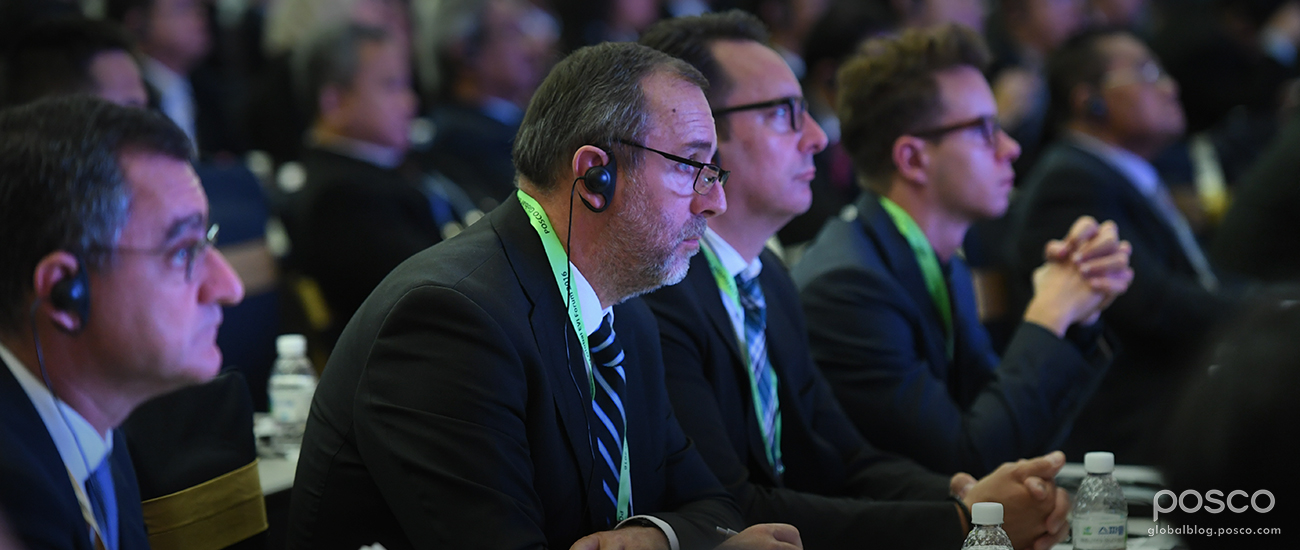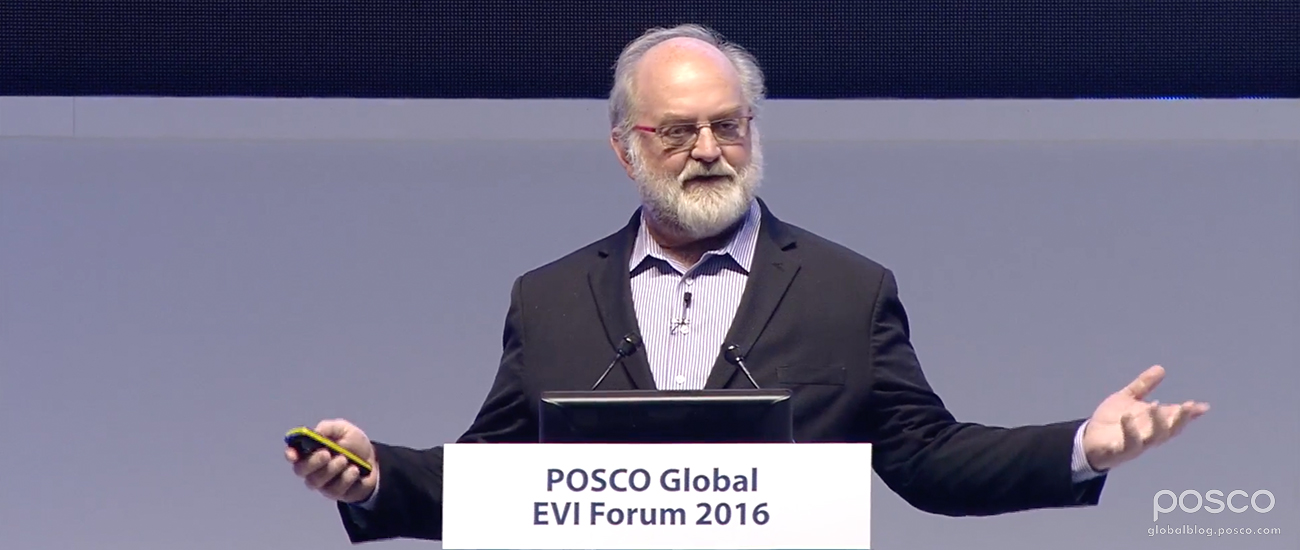Digital technology keeps growing faster, cheaper and more ubiquitous, which in turn is transforming the world around us ever faster. Not just computers and cell phones, but transportation, manufacturing, retail and all aspects of our economy and society are being reworked and revolutionized. And steel is not exempt from these changes.

To better understand those dramatic developments, POSCO invited noted futurist Thomas Frey to address this year’s POSCO EVI Forum, held Oct. 31-Nov. 2 in Incheon, South Korea. Every two years, POSCO invites hundreds of its customers and partners to learn about POSCO’s unique approach to steel solutions and to talk about the future of the steel industry. So Frey’s presentation gave all the attendees plenty of food for thought.
Frey is the founder of the DaVinci Institute, a think tank and research firm dedicated to exploring the deep transformations that technology is bringing to our world. Frey pointed out that all industries have an arc, with a beginning, middle and an end, and at the moment most of the biggest and most-profitable industries are in the latter half of that curve. In other words, big changes are underway.
A Challenging New World

Frey pointed out that there are two major aspects to innovation: disruptive and catalytic. Disruptive innovation refers to industries that are hurt or eliminated by technology (like how cars took the place of horses and carriages). But catalytic innovation creates whole new fields and economies (like how the rise of electricity completely changed manufacturing and what industry produced).
So far, the modern digital revolution has had two big catalytic innovations – the internet and smart phones. But Frey sees eight more fields that could be just as transformative:
- Driverless vehicles
- The trillion sensor movement
- 3D printing
- The Internet of Things (IoT)
- Contour crafting
- Artificial Intelligence (AI)
- Virtual Reality (VR)
- Flying drones
Each mobile app has the potential to eliminate a few jobs, but with thousands of apps, those jobs begin to add up. Together, these innovations could see 2 billion jobs disappear, as machines take over for up to 47 percent of current jobs. And, Frey noted, some 8,000 startups received $12 billion last year, all looking to take a bite out of traditional industries. “There are no safe industries out there,” Frey said.
But Frey didn’t make this prediction in a “doom and gloom” sort of way – “It’s a wakeup call,” he said. While challenging, these changes could also lead to all new jobs and possibilities.
Cruisin’ Into a New World of Cars
To illustrate what these catalytic innovations might mean, Frey went in-depth about the implications of the rise of driverless vehicles. Most obviously, self-driving cars and trucks will eliminate a wide range of driving-related jobs, like taxi drivers and couriers.
But the changes caused by driverless vehicles to our world will go much deeper than that. Self-driving cars will change society from a buying model to an access economy, where people will just order a vehicle when they need one instead of owning their own. That eliminates the need for most parking lots, gas stations and other automotive fields.
The improved safety potential of driverless vehicles could greatly reduce repair-related work. And, because nearly 10 percent of retail sales are car-related, this could result in major changes for our economy as a whole. Some parts will change from B2C to B2B, while other aspects of the industry will just disappear.
Steel and the New Era of Megaprojects
All businesses have an arc, and steel will, too, noted Frey. “How long before we reach peak steel? Don’t know yet, but we think there’s a long run here still.”
So, with the rise of new substances and manufacturing, as well as the digitizing of much of the economy, what does that mean for steel?

“The future of steel will be defined by megaprojects,” Frey asserted. Indeed, megaprojects represent 8 percent of the global GDP, so the changing infrastructure needs caused by rising digitization will transform economies and the steel industry. “By 2030, we’ll see more changes to our core infrastructure than in the combined total of human history.”
These megaprojects include huge new bridge and tunnel projects, often linking countries across great bodies of water, as well as new high-speed transportation options, like hyperloops and ET3s. With hyperloops promising speeds of 1,100km/hour and ET3s theoretically able to go 6,000km/hour, the ability to go halfway around the world in a couple of hours could once more revolutionize how our societies work. But building the tracks and systems needed for these technologies would require massive amounts of spending – and massive quantities of steel.
“We are entering into an era of unprecedented opportunity,” summarized Frey, talking about both the steel industry and society as a whole. Thanks to Thomas Frey, the EVI Forum attendees gained many valuable insights to think about and discuss during this year’s event.

POSCO EVI Forum Impresses With Solution Marketing
Solution Marketing Revs Up POSCO’s Steel Business
2014 POSCO Global EVI Forum #1 ‘From Steel Supplier to Solution Partner’
2014 POSCO Global EVI Forum #2 Program Details and Client Interview
